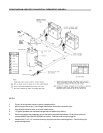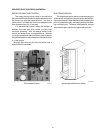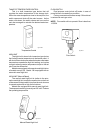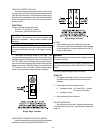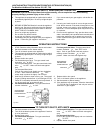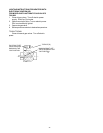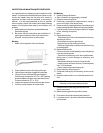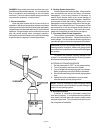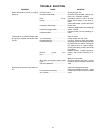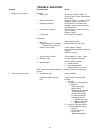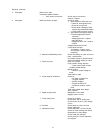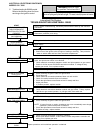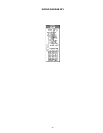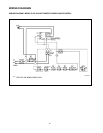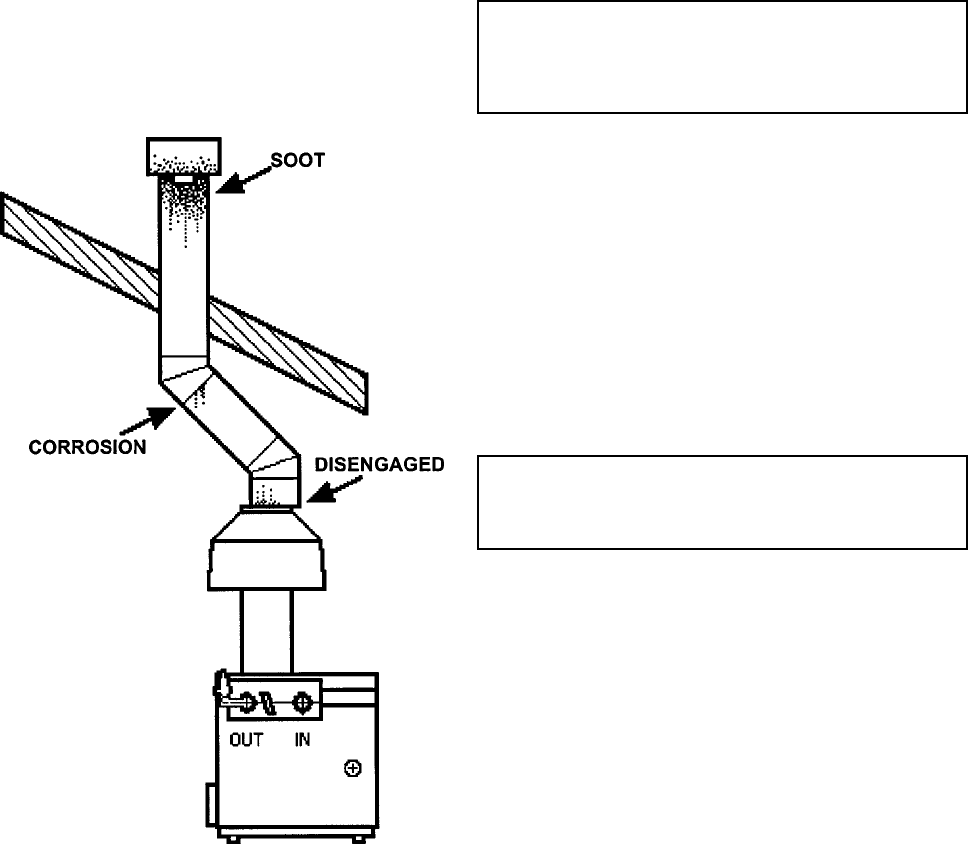
2. Venting System Inspection
Visually inspect the venting system. Make sure the
vent connections are secure and have not become
disengaged. Look for any indication of corrosion, or
carbon (soot) streaks which could cause leakage of
products of combustion into the living space. Inspect the
vent terminal outside the building. Make sure it is not
damaged to cause blockage or restriction of the flue gas.
Observe for any indication of soot. The presence of soot
accummulation in the vent terminal would indicate an
abnormal operating condition. This should be investi-
gated and corrected by a qualified service agency.
3. Circulator (Water Pump) Inspection
The circulator is permanently lubricated and thus,
will not require any lubrication. Inspect for evidence of
water leakage. This should be corrected to prevent any
possible damage to electrical components of the boiler.
CAUTION: In case of a prolonged power failure during
freezing weather conditions, heater and piping system
must be drained completely to avoid possible damage to
the system.
To prevent the potential freezing damage to the
system, it is recommended that the following system
shut down procedure be performed.
SYSTEM SHUT DOWN PROCEDURE
1. Set the thermostat to "OFF" or the lowest setting.
2. Turn off all electric switches to the heater.
3. Turn off all gas valves supplying gas to the heater.
Refer to operating instruction label on the heater.
4. Shut off the water supply to the heater piping system
loop.
5. Open drain valve on the heater to remove water
from the heater and the piping circuits.
NOTE: It may be necessary to open the purge valves
and/or manual air vents to facilitate complete drainage of
water from the heating system.
4. Service Assistance
If service is required on the heater, contact your
local service agency. It is important and very often will
save time if you state the model number, serial number
and type of gas used. This information will be found on
the nameplate of the heater.
Fig. #8204.1
DANGER: Keep heater area clear and free from com-
bustibles and flammable materials. Do not obstruct the
flow of combustion and ventilating air into the heater
enclosure. Failure to observe these safety precautions
can cause fire, explosion, or asphyxiation.
1. Burner Inspection
Clean the main burners and air louvers of dust, lint
and debris. With burner in operation, make a visual check
of the burner flame and the pilot flame (when equipped).
Yellow flames indicate some restriction of combustion air
openings. A bright orange, luminous flame is not normal
and can cause sooting under prolonged operation.
Should this condition be observed, contact immediately
a qualified service agency to correct the problem.
34



